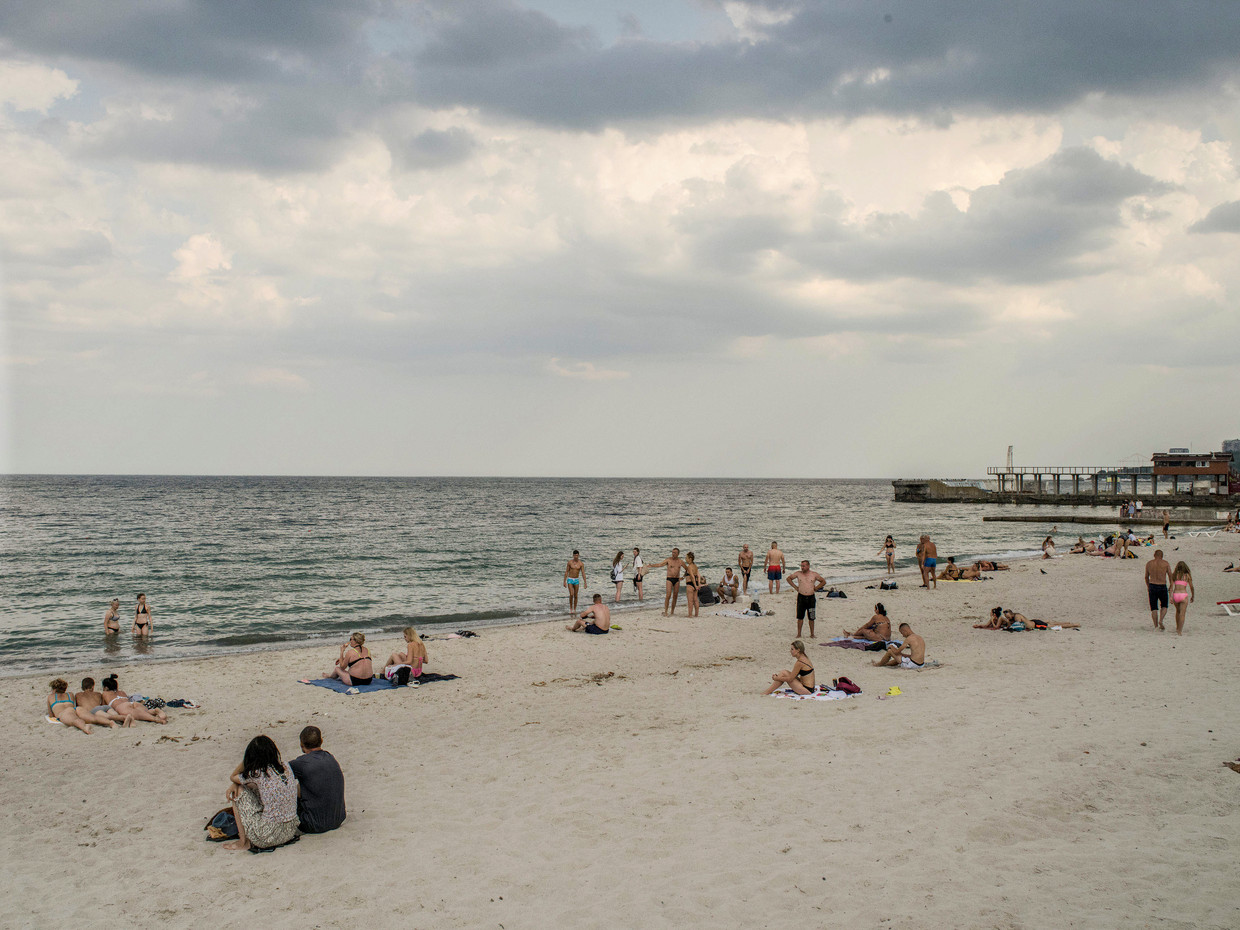Dolphins have died en masse in the Black Sea since the beginning of the Russian invasion. Ukraine is documenting the deaths in hopes of prosecuting Russia for the environmental toll the war is taking. “This is a new challenge in wartime.”
The victim, a harbor porpoise, was found early this summer on a stretch of beach near the port city of Odessa in southern Ukraine, and the cause of death is unknown. Agents, representatives of the Public Prosecution Service, but also ordinary witnesses gathered in the square where the autopsy was to take place despite a little rain.
The harbor porpoise was one of the animals dying en masse today on the shores of the Black Sea. “Dolphins aren’t just cute,” Pavel Goldin, a marine mammal veterinarian at the Scientific Center of Sea Ecology in Ukraine, said before the autopsy. They are also important to the marine ecosystem. If the dolphins are bad, the whole ecosystem is bad.”
And dolphins in the Black Sea are in trouble. Ukraine says their fate is evidence of the brutal toll the war takes on marine life and the environment in general – something they want documented for prosecution.
Four acts – genocide, crimes against humanity, aggression and war crimes – are currently recognized as international crimes. Ukraine is keen to add a fifth ecocide, and it is building a case against Russia. Porpoise dissection is part of that effort.
“At the moment, we are developing a strategy to prosecute perpetrators of war crimes and ecocide,” said Maxim Popov, an advisor to the Ukrainian Prosecutor General who deals specifically with environmental issues. “The environment is often referred to as the silent victim of war,” Popov said. Ukraine wants to change that because “the environment has neither citizens nor borders”.
peace plan
Noting Ukraine’s importance to the issue, President Volodymyr Zelensky has included “immediate protection of the environment” in the ten-point plan that Ukraine hopes will form the basis for negotiations to end the war.
According to Ruslan Strelets, Ukraine’s Minister of Environmental Protection, environmental researchers have collected data on more than 900 dolphin deaths. In addition, dolphins are found on the coasts of Ukraine, Turkey and Bulgaria, countries that also border the Black Sea.
In one week in July, 10 dolphins were found, according to Strelets, and are being studied to determine how they died. This is a new challenge in wartime. We must not lose information about environmental crimes.”

The destruction of the Kakhovka Dam, which sent trillions of polluted water down the Dnieper into the Black Sea, was the worst environmental blow yet in what was already an ecologically catastrophic war.
But even before that, dolphins were dying at an alarming rate. Russian warships threatening the southern coast of Ukraine constantly use sonar signals. Scientists say they can disrupt the dolphins’ sense of direction because they use their natural sonar for echolocation.
Explosions, missile launches and low-flying Russian planes also add to the cacophony that shocks the dolphins, Goldin says. At the same time, he cautions, it’s too early to directly link dolphin deaths to a single cause.
mines
Naval mines also present deadly new obstacles. Pollutants from explosives and fuel spills, along with a variety of war debris, have degraded large parts of the Black Sea Biosphere, Ukraine’s largest protected area designated as a Wetland of International Importance.
The environmental losses caused by the massive impact of the dam breach are still under intense study. Goldin says the flood waters contained heavy metals, pesticides and nutrients, especially nitrogen and phosphorous, that had built up in sediments behind the dam. These nutrients cause massive algal blooms that can become toxic.
More than 50,000 dolphins may have died in the Black Sea in the first year of the war alone, according to some environmentalists. But scientists involved in forensic investigations are more cautious. According to Goldin, it is not yet possible to make a correct estimate. Ukraine is working with international partners to get a better picture.
The real number is unknown
Ukraine itself, Strelets says, has also had to develop new methods for documenting damage to the environment. The Black Sea is a combat zone, large parts of the Ukrainian coastline are occupied by Russia and many areas are very dangerous to visit due to heavy fighting.
But it’s one thing to document a dead dolphin washed ashore. Understanding why an animal died is much more difficult. After each autopsy, Ukraine sends samples to experts at the University of Padua in Italy and Hannover University in Germany for further analysis.
This work takes time: only after the war, when a large-scale study of marine life in the Black Sea can be carried out, will the real losses be known.

However, every dead dolphin does indeed provide important clues. The porpoise that was dissected this summer had died a few weeks earlier, days after the dam was destroyed. With limited resources in Ukraine, the animal had to be frozen until an autopsy could be performed.
“Here’s a little kid,” Goldin says, as his team places the porpoise on a table to defrost the ice. The strong scent when cutting an animal is overpowering, even outdoors. Afterwards, Goldin said he was surprised to find that the animal’s stomach was full and that it had recently eaten at least five types of fish. “A lot of the food has shown that it’s ready for life,” Goldin said. This only adds to the mystery of his death.
© The New York Times

“Creator. Award-winning problem solver. Music evangelist. Incurable introvert.”







More Stories
British military spy satellite launched – Business AM
Alarming decline in the Caspian Sea
Lithuania begins construction of military base for German forces